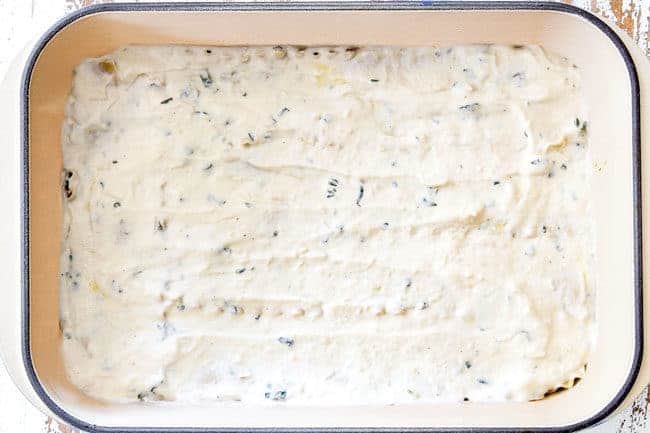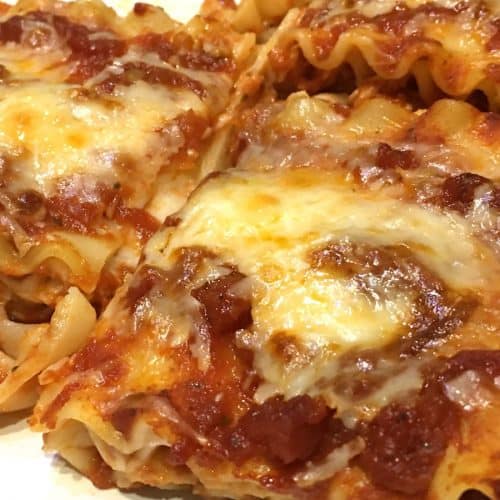How do you spread ricotta cheese to lasagna?
Ricotta cheese is a soft, fresh Italian cheese that melts beautifully into pasta dishes. But how do you get it evenly distributed throughout the dish without having it run off the edge?
Ricotta cheese is often used in lasagna because it adds moisture and flavor. The trick is spreading it out evenly so that it covers the entire surface.
How do you spread ricotta cheese to lasagna?
- First, make sure your pan is hot enough for the cheese. You can also add some oil or butter to help with this.

- Next, cut the cheese into small pieces. If you have a food processor, use it to chop up the cheese.
- Spread the cheese on top of the pasta.
- Now cover the lasagna noodles with sauce.
- Next, lay down another layer of pasta.
- Top with more sauce and sprinkle with Parmesan cheese.
- Bake at 350 degrees F (180 C) until golden brown.
How to make ricotta cheese mixture for lasagna?
In a large bowl, mix together: 1 cup whole milk, 2 cups heavy cream, ½ teaspoon salt, ¼ teaspoon freshly ground black pepper, 3 egg yolks, 4 ounces (115 grams) finely grated parmesan cheese, and 8 ounces (225 grams) ricotta cheese.
Beat the eggs and cream together using an electric mixer set at medium speed. Add the parmesan cheese and beat well.
Add the ricotta cheese and continue beating until smooth.
Cover and refrigerate for at least 30 minutes before using.
Does it matter how you layer a lasagna?
Yes, it does! It’s important to keep the layers even so they cook properly.
For example, if you put the meat sauce on the bottom first, then the ricotta cheese, then the spinach, then the mozzarella cheese, then the tomato sauce, then the pasta, then the Parmesan cheese, you’ll end up with a thicker layer of a sauce than if you started with the pasta on the bottom.
You could also start by putting the pasta on the bottom, then the ricotta, then the spinach, and so on.
Why does lasagna have to bake so long?
Lasagna is made from layers of pasta, sauce, cheese, and meat. The layers need to be cooked slowly in order for all of the flavors to meld together properly.
Because it’s baked at such high temperatures, lasagna is prone to burning if not carefully prepared. This means that some people prefer to make their own homemade lasagna over buying one ready-made.
If you want to get creative with your lasagna, try making individual servings by cutting the lasagna into squares before putting it in the oven.
Does lasagna have to be covered with foil when baking?
Yes! If you don’t cover your lasagna while it’s baking, you run the risk of having burned edges and uncooked spots. You also increase the chance of burning yourself because the heat will rise from the bottom of the pan.
Covering your lasagna with aluminum foil helps keep the heat contained. It also protects against any stray drips of hot liquid landing on your countertop.
How long to bake lasagna at 425?
Cooking times vary depending on the size of your pan, how thick your lasagna sheets are, and how much liquid you add. To start, pour enough water in the bottom of your pan to cover the noodles by about an inch (2 cm).
Add 1 tablespoon (15 mL) of olive oil. If you’re using fresh pasta, drop it into boiling salted water and stir occasionally until tender, 5 to 10 minutes. Drain.
If you’re making dried lasagna noodles, boil them in salted water until they float to the top, 7 to 8 minutes. Drain well. Lay one sheet of pasta over the bottom of the pan. Spread 2 cups (500 mL) of the marinara sauce over the pasta.
Sprinkle half of the mozzarella cheese evenly over the sauce. Repeat layering two more times: pasta, sauce, cheese, and remaining pasta. Top with the rest of the mozzarella. Bake for 35 to 40 minutes, or until the cheese is melted and bubbly. Let cool slightly before cutting.
How long should you leave lasagna in the oven?
The best way to know when your lasagne is done baking is to use an instant-read thermometer. Insert the probe into the center of the lasagne and take the reading.
When cooking lasagne, you don’t have to worry about overcooking the pasta. Overcooking will make your lasagne mushy. You can always remove the lasagne from the oven if it’s not cooked through yet.
You may need to adjust the heat as you go along. If the lasagne starts to brown too quickly, turn down the heat.
How do I make lasagna easier?
You can make lasagna ahead of time and freeze it. Just follow the recipe above, then wrap each layer individually in plastic wrap and place them in a freezer bag. When ready to reheat, thaw the lasagna completely and put it back together.
You can also freeze individual servings of lasagna. Simply separate the layers and store them in airtight containers. Reheat frozen lasagna in a microwave or conventional oven.
What temperature does lasagna need to be cooked to?
To get perfectly chewy lasagna, you need to cook it at 375°F (190°C). That means you’ll need to preheat your oven to this temperature before putting the lasagne in.
If you’re worried about burning the edges of your lasagne, you can brush some extra virgin olive oil on top of the lasagne before placing it in the oven. This will help prevent the edges from getting too dark.
Can I refrigerate lasagna?
Yes! Refrigerating lasagna helps keep it moist. It won’t taste like lasagna if you let it sit out at room temperature, though.

Lasagna freezes very well. Wrap individual portions in foil and freeze them. When ready to reheat, unwrap the lasagna and return it to the oven to warm up.
How do I reheat lasagna?
Lasagna reheats easily in the microwave. Put a portion of lasagna in a microwaveable dish and heat it on high power for 3 to 4 minutes. Check the lasagna after 2 minutes and continue heating until heated through.
Alternatively, you can reheat lasagna in a conventional oven. Place a portion of lasagna on a rimmed baking sheet and broil it for 5 to 6 minutes per side, turning once.
Lasagna is a delicious Italian classic that has been around for centuries. It’s traditionally made with meat but today we are going to show you how to make vegetarian lasagna using tofu instead. The secret to making a great vegan lasagna is to add plenty of vegetables and spices to give it flavor.
